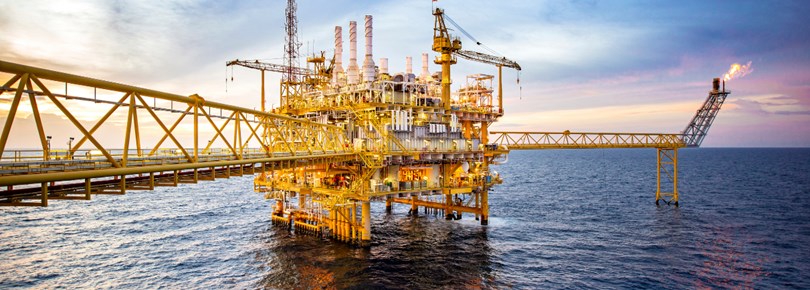Off-Shore Bridge Bearings
November 2021

Supplying products to the Offshore Industry can be a challenging task.
The whole process, from documentation and design until manufacture and testing, all must be done with extreme precision.
Sometimes the requirements push the scope of current technology, and the customers have to put their trust in our ability comply to with the harsh conditions of the Offshore Industry.
Utilising our range of Fluorinoid® load-bearing low friction materials for over 30 years, we have gained a global reputation for providing sliding support solutions for bridges, oil platform linkspans, sea terminals and pipelines to service a range of applications, including heavy industrial bearings for harsh environments.
Fluorocarbon supplies Fluoroglide® Bridge Bearings for link bridges, which connect and carry services between platformsIn addition to our product offering, we provide our extensive experience in on-site installation support whilst training and knowledge sharing with your engineers.
Typical Assemblies
A bridge bearing typical assembly consists of a Lower Plate made from Fluorinoid® material which can be either surface mounted or recessed for high bearing pressure. The top plate can be either Fluorinoid® material or polished Stainless Steel.
In many Bridge Bearing applications dimpled Fluorinoid® material lubricated with Fluoroslip® FL414 is used on the lower plate, this slides against the polished Stainless Steel top plate or another Fluorinoid® PTFE plate and ensures long service life.
If required, an elastomeric element can be incorporated to accommodate some misalignment of the bridge during its life. This reduces the risk of overloading one section of the bearing material if the load becomes uneven due to external forces such as turbulent seas or high winds.
Bearings act as bridge supports and allow structural movement due to thermal or sea state effects.
If a bearing is not functioning, then there can potentially be serious consequences to adjacent structures.
Why use PTFE?
Because of its characteristics, the use of PTFE in bearings has been steadily increasing, although its application does not extend to all variants of bridge bearings.
Our range of Fluorinoid® materials have been specifically developed over many years for slide bearing applications.
Depending on design and application the maximum loading can be up to 280Kg/cm2
The addition of special fillers to PTFE reduces compressive creep, therefore, increasing the load-bearing potential. It also considerably reduces the wear rate and increases the toughness of the resultant composite.
Some of our Fluorinoid® bearing materials have been designed to be ultraviolet light resistant to ensure long term reliability of the materials bond to its backing plate.
The low coefficient of friction that PTFE has is unique for two primary reasons:
1. PTFE against stainless steel has an even lower coefficient of friction than PTFE against PTFE. In fact, the coefficients of PTFE against steel have been found to be the lowest between any two solid materials;
2. The coefficient reduces with increased pressure;
The relatively high viscosity is not changed by temperature over the range of 0 to 70 deg C hence the lubricant can be used in all environments.
Fluoroslip® FL414 is a very high molecular weight lubricant based on silicone oil that will not evaporate or dry out whilst in service.
To find out how we can help your latest project contact team@fluorocarbon.co.uk










